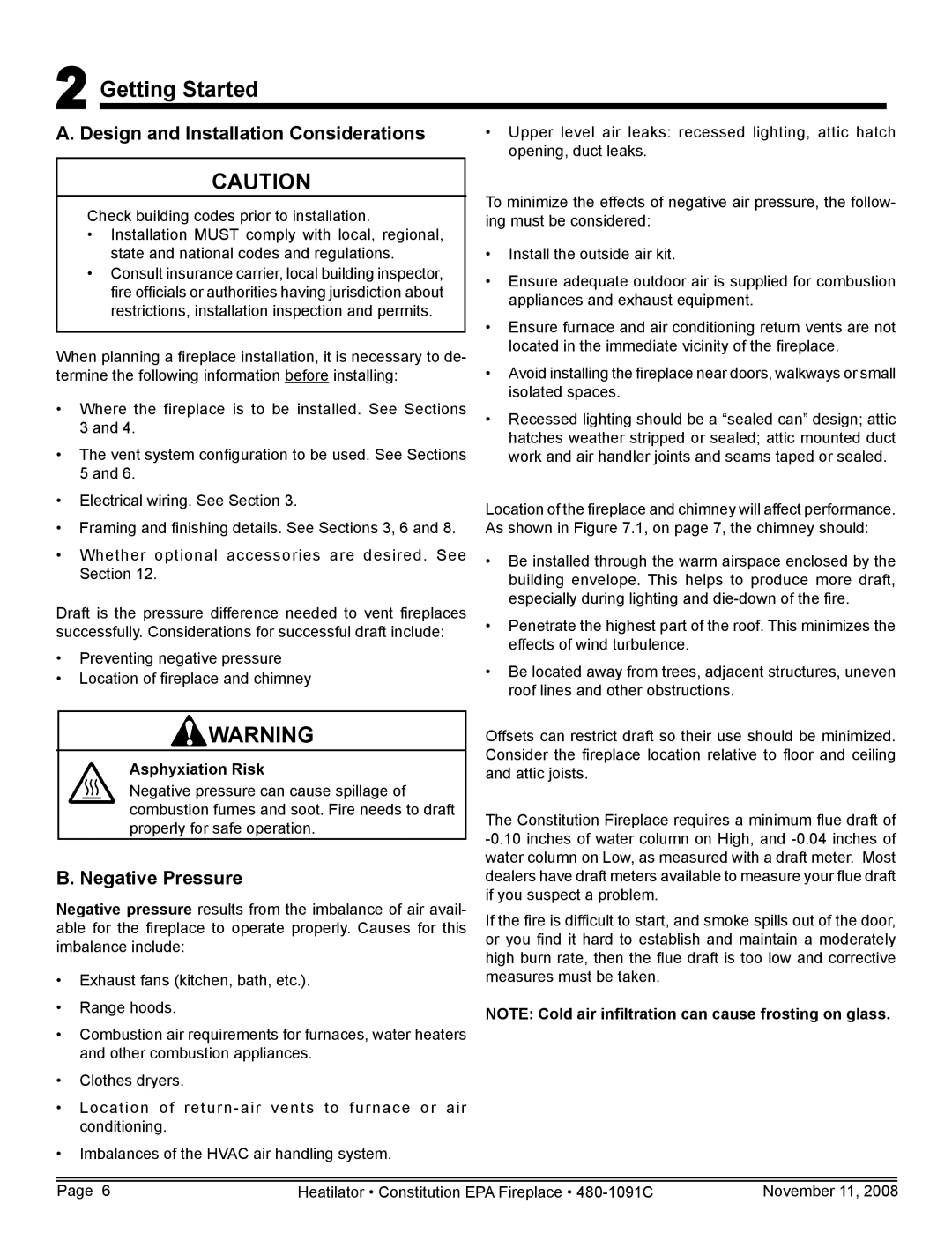C-40 specifications
Hearth and Home Technologies (HHT) has long been known for its commitment to innovation and quality in the heating and home comfort industry. One of their standout offerings is the C-40, a versatile and efficient gas fireplace that embodies the brand’s dedication to modern aesthetics and advanced technology. This fireplace is designed to not only provide warmth but also enhance the ambiance of any living space.The C-40 features a sleek, contemporary design that can seamlessly fit into various interior styles. Its clean lines and minimalist frame allow it to serve as a stylish focal point in a room, while offering the functionality and performance that homeowners expect from a high-quality gas fireplace. The unit is available in various configurations, including built-in and wall-mounted options, allowing for flexibility in installation and design.
One of the most notable features of the C-40 is its impressive heat output. With the ability to deliver efficient and evenly distributed warmth, this gas fireplace can effectively heat spaces of various sizes, making it an excellent choice for both small and large rooms. The adjustable flame height feature further enhances the user experience, allowing homeowners to customize their heating preference and create the perfect atmosphere for any occasion.
The C-40 is equipped with cutting-edge technologies, including electronic ignition and a remote control system, making it convenient and easy to use. The electronic ignition ensures quick and reliable startup, while the remote control allows for effortless temperature and flame adjustment from anywhere in the room. This added convenience is a significant benefit for those who value comfort and ease of operation.
Additionally, the C-40 incorporates advanced safety features, such as an automatic shut-off and a secure glass front, providing peace of mind for families. The glass front not only enhances safety but also serves to display the mesmerizing flames beautifully, allowing everyone to enjoy its warmth and glow.
In summary, Hearth and Home Technologies’ C-40 is a prime example of combining stylish design with modern technology and efficiency. Its exceptional heat output, customizable features, and advanced safety measures make it a standout choice for homeowners looking to enhance their living spaces with a dependable gas fireplace. Whether for cozy family gatherings or quiet evenings at home, the C-40 offers both aesthetic appeal and functional excellence, ensuring it remains a popular choice in contemporary home design.

